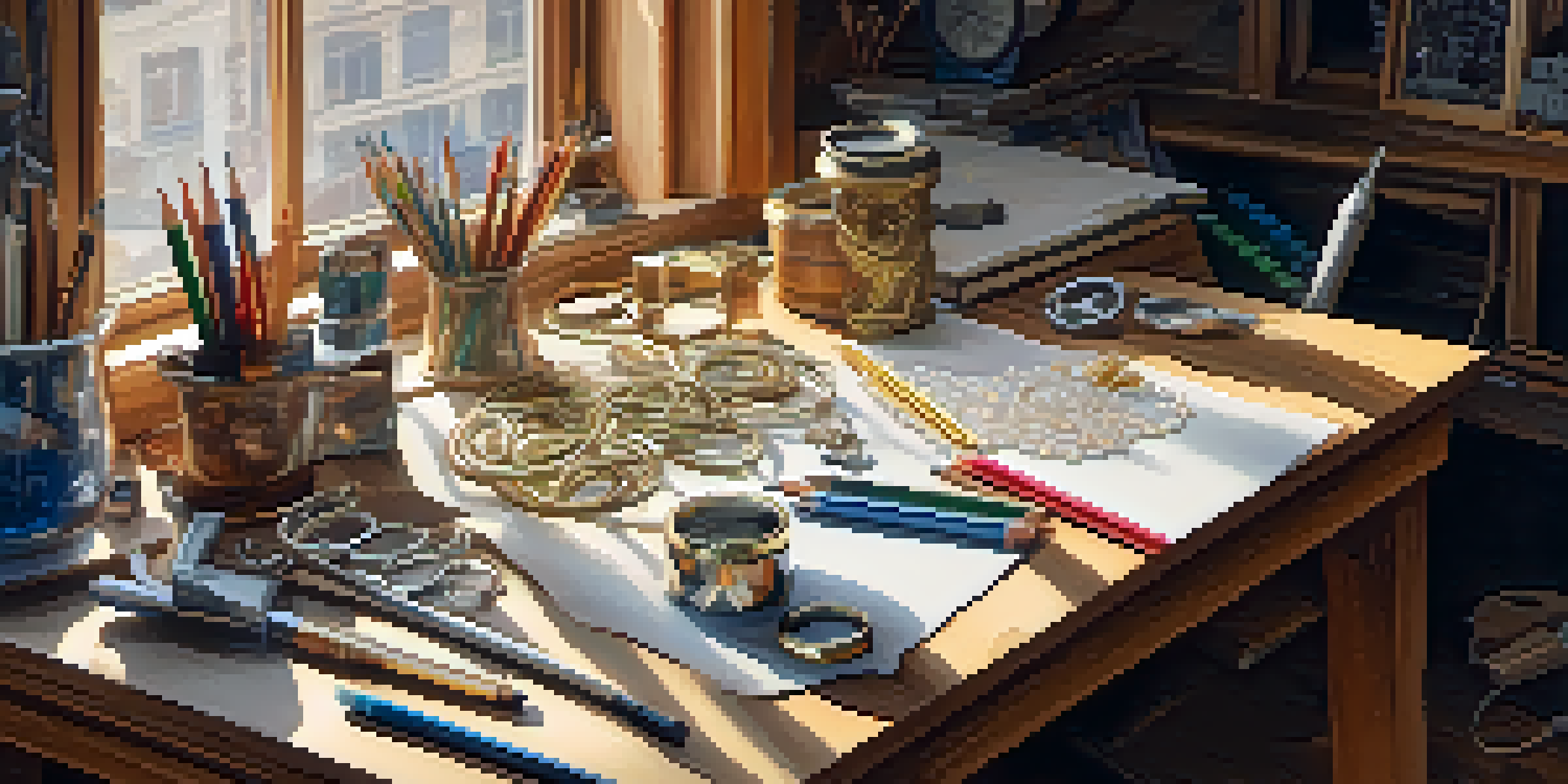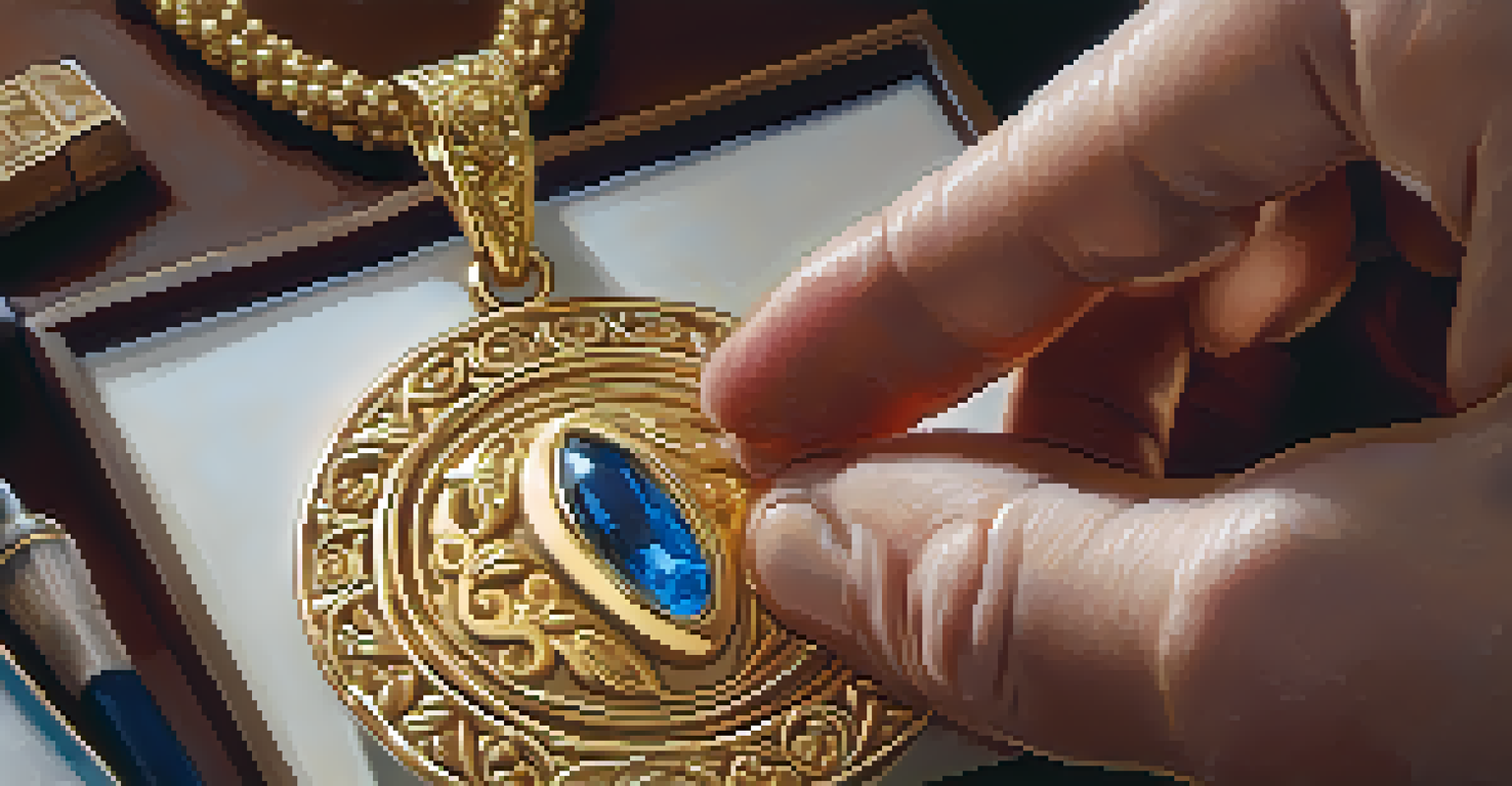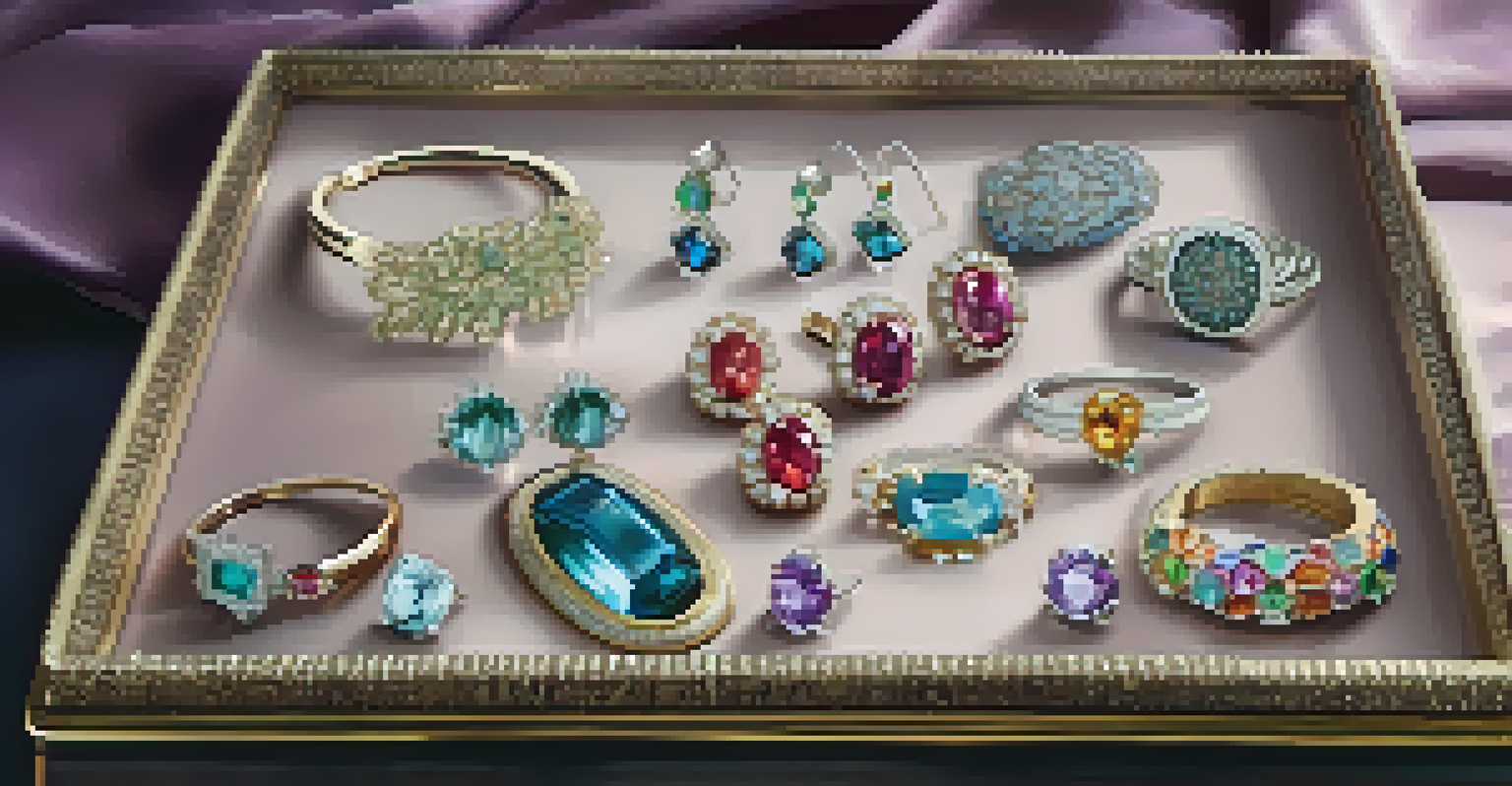From Sketch to Creation: The Process of Carving Jewelry

The Inspiration Behind Jewelry Design
Every beautiful piece of jewelry starts with a spark of inspiration. Whether it's a unique shape found in nature or a personal story, designers draw from various sources to ignite their creativity. This initial concept is crucial, as it sets the tone for the entire design process, guiding the artist's choices down the line.
Jewelry takes people's minds off your wrinkles.
Once inspiration strikes, designers often translate their ideas into sketches. These drawings serve as blueprints, capturing the essence of the envisioned piece. Sketching allows for experimentation with shapes, sizes, and details, enabling designers to explore multiple variations before committing to a final design.
The beauty of this stage is that it invites spontaneity and imagination. Designers can take risks and allow their creativity to flow freely, knowing that not every sketch will make it to the final product. This exploration is essential in developing a piece that truly resonates with its intended audience.
Choosing the Right Materials for Your Design
Material selection is a pivotal step in the jewelry-making process. Different materials not only affect the overall look and feel of the piece but also its durability and wearability. Common choices include metals like gold and silver, gemstones, and alternative materials like wood or resin, each bringing its unique character.

Designers must consider the properties of each material, such as weight, texture, and color. For example, while gold offers a classic and luxurious finish, silver provides a more contemporary feel. Understanding these nuances allows designers to effectively convey their artistic vision through the right medium.
Inspiration Fuels Jewelry Design
Designers draw from nature and personal stories to spark creativity and guide their design process.
Additionally, ethical considerations are becoming increasingly important in material selection. Many designers now prioritize sourcing sustainable and ethically mined materials, reflecting a commitment to responsible craftsmanship. This not only enhances the piece's value but also connects with consumers who share these values.
Transforming Sketches into 3D Models
As the design solidifies, the next step is to transform sketches into three-dimensional models. This can be done through traditional methods like carving wax or using modern techniques such as computer-aided design (CAD). These models allow designers to visualize how their piece will look and function in real life.
The only thing that lasts longer than a diamond is a woman's love for jewelry.
Creating a 3D model is crucial for identifying any potential issues before the actual carving begins. It allows for adjustments to be made, ensuring that every detail aligns with the original vision. This stage is like a rehearsal for the final performance, where any hiccups can be addressed early on.
Moreover, 3D modeling opens up new possibilities for intricate designs that may be challenging to achieve by hand. It enables designers to play with complex shapes and patterns, pushing the boundaries of traditional jewelry-making techniques. This blend of artistry and technology enriches the creative process.
The Art of Carving: Techniques and Tools
Carving jewelry is a meticulous art form that requires both skill and precision. Jewelers use a variety of tools, from traditional hand tools like files and chisels to modern machinery like lasers. Each tool serves a specific purpose and contributes to achieving the desired finish and detail in the piece.
Techniques can vary significantly based on the material and design. For softer materials, hand carving may be preferred for its tactile nature, while harder materials might require more advanced tools. Understanding these techniques is essential for translating the design into a tangible piece of jewelry.
Material Choices Matter
Selecting the right materials influences the aesthetic, durability, and ethical values of the jewelry piece.
Moreover, the carving process itself can be quite meditative. As artisans work, they often lose themselves in the rhythm of shaping and refining their creations. This deep focus not only enhances the quality of the work but also fosters a personal connection between the artist and the piece.
Finishing Touches: Polishing and Setting Stones
Once the carving is complete, the piece enters the finishing stage, where every detail is polished to perfection. This process involves smoothing out rough edges and enhancing the shine of the metal or material. A well-finished piece radiates quality and craftsmanship, attracting the eye of potential buyers.
For pieces that incorporate gemstones, setting them securely is a critical step. Jewelers must ensure that each stone is positioned perfectly, not only for aesthetic appeal but also for durability. Various setting techniques, such as prong or bezel settings, can dramatically alter the piece's overall look.
This stage is where the piece truly comes to life. As gemstones catch the light and the metal gleams, the jewelry transforms from a raw creation into a stunning work of art. It’s a satisfying culmination of all the earlier efforts and a moment of pride for the artisan.
Quality Control: Ensuring a Flawless Finish
Quality control is an essential part of the jewelry-making process, ensuring that every piece meets high standards before it reaches the customer. This involves thorough inspections to catch any imperfections or flaws that may have occurred during production. Attention to detail at this stage can make all the difference in customer satisfaction.
Jewelers often assess aspects such as the quality of the finish, the secure setting of stones, and the overall craftsmanship of the piece. A rigorous quality control process not only enhances the brand’s reputation but also builds trust with customers who expect excellence.
Quality Control Ensures Excellence
Thorough inspections during quality control guarantee that every piece meets high standards before reaching customers.
Additionally, feedback from quality control can inform future designs and techniques. By understanding common issues or areas for improvement, jewelers can refine their processes and continuously elevate their craft, ensuring each new piece reflects their commitment to quality.
Marketing Your Unique Jewelry Creations
Once a piece is complete, the next step is sharing it with the world. Effective marketing strategies can help highlight the unique aspects of each creation, attracting potential buyers. This could involve social media campaigns, engaging with local boutiques, or even participating in craft fairs to showcase the work.
Storytelling plays a vital role in marketing jewelry. By sharing the inspiration behind each piece, designers can create a deeper connection with customers. Narratives that highlight the craftsmanship and care put into each creation resonate with consumers, making them feel more invested in the purchase.

Moreover, building a strong brand identity can help distinguish a designer in a crowded marketplace. Consistent messaging, visuals, and customer engagement strategies reinforce the brand's values and attract a loyal following. Ultimately, effective marketing not only drives sales but also fosters a community around the art of jewelry-making.